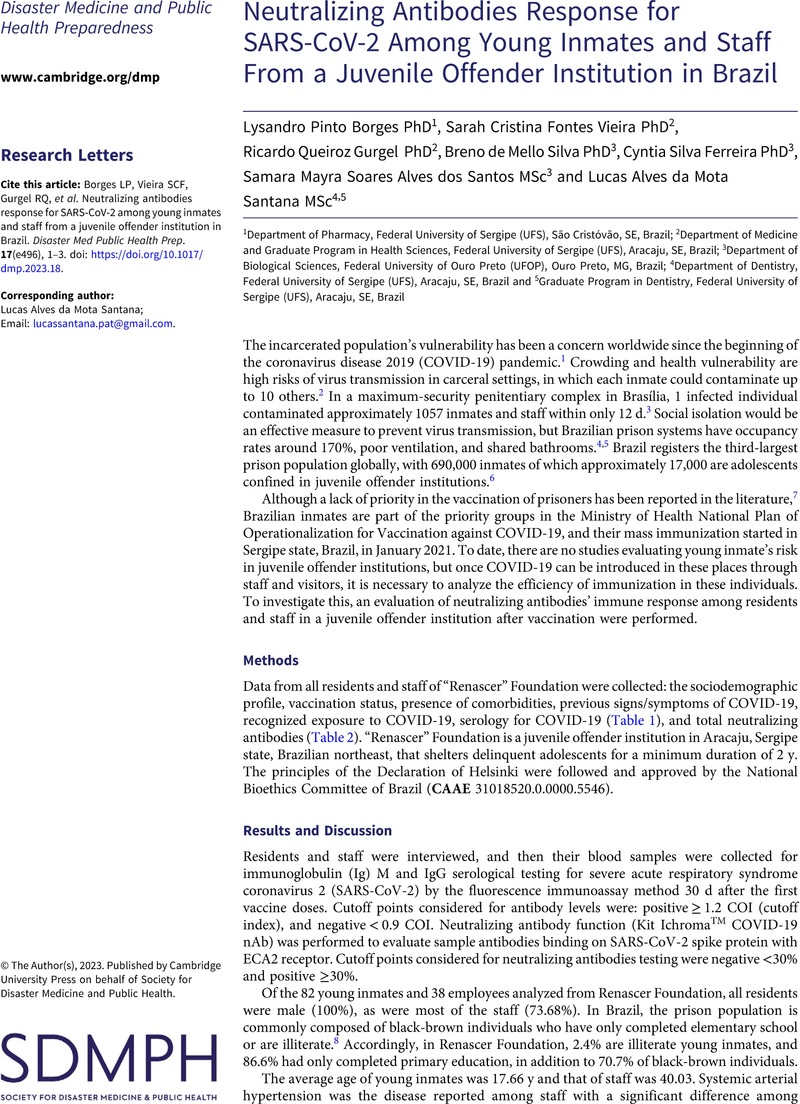Ministério da Justiça e Segurança Publica. Departamento Penitenciário Nacional - Covid-19: Painel de Monitoramento dos Sistemas Prisionais.
2020. Accessed September 26, 2021.
http://depen.gov.br/DEPEN/covid-19-painel-de-monitoramento-dos-sistemas-prisionais
Google Scholar 